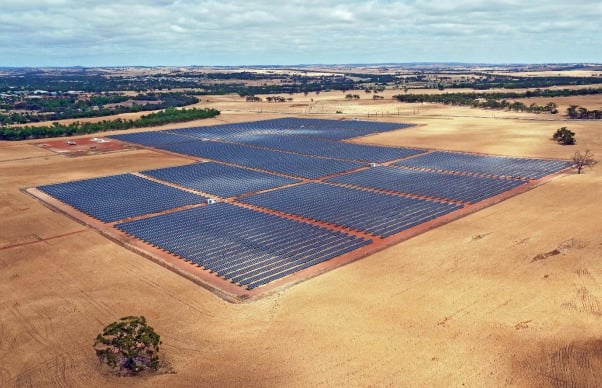
Image: Carnegie.
Western Australia’s Environmental Protection Authority (EPA) has set the environmental criteria for the Western Green Energy Hub (WGEH), a 70GW solar and wind mega-project.
The AU$100 billion (US$65 billion) project is being pursued by project developers WGEH. The developer inked a collaboration agreement in September with Korea Electric Power Corporation (KEPCO) and submitted the project to the EPA earlier this month.
Unlock unlimited access for 12 whole months of distinctive global analysis
Photovoltaics International is now included.
- Regular insight and analysis of the industry’s biggest developments
- In-depth interviews with the industry’s leading figures
- Unlimited digital access to the PV Tech Power journal catalogue
- Unlimited digital access to the Photovoltaics International journal catalogue
- Access to more than 1,000 technical papers
- Discounts on Solar Media’s portfolio of events, in-person and virtual
Due to the project’s vastness, incorporating shipping and port infrastructure alongside the 15,000 square kilometres the hub will span, several environmental criteria must be adhered to. You can find the full details here.
The EPA statement read: “Several preliminary key environmental factors are complex. Detailed assessment is required to determine the extent of the proposal’s direct and indirect impacts, and whether the EPA environmental factor objectives can be met.”
The WGEH project was previously slated to have a generating capacity of 50GW; however, referral documents indicate that this has increased to 70GW. This will be supported by around 3,000 wind turbines and up to 35 solar PV power plants located across the proposed site.
The hub would be built in phases to produce up to 3.5 million tonnes of green hydrogen per year, which would be provided domestically and internationally.
Stage One of the project is expected to generate around 6GW of wind and solar PV power, alongside 330,000 tonnes per annum of green hydrogen production via centrally-sited electrolysers.
Alongside the renewable energy generation and hydrogen production, the site also includes plans to house data centres in the vicinity, leveraging the large-scale renewable energy generation that could be sourced from the site.
A consortium including Singaporean-based InterContinental Energy and renewable energy developer CWP Global first proposed the mega-project. These companies are also behind the 26GW Asian Renewable Energy Hub, which Australia’s federal government rejected in 2021 due to its environmental impacts.







